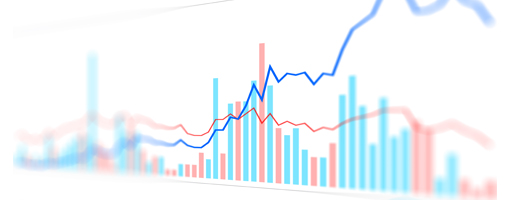Over a third (37 per cent) of tranche 13 schemes are in surplus according to The Pension Regulator’s (TPR) Scheme Funding Analysis 2020, with asset positions continuing to improve.
TPR's analysis of defined benefit (DB) and hybrid schemes found that the average ratio of assets to technical provisions (TPs) for schemes in deficit was 84.1 per cent, compared to 109.7 per cent for those in surplus.
This represents a combined ratio of 93.4 per cent, a 4.8 percentage point increase on average over tranche 10.
The regulator stated that the trend of improved asset positions seen in tranche 12 had continued for tranche 13 schemes, attributing this to the combined impact of sponsor contributions and positive gains on investments in the three years to valuation.
It clarified however, that liabilities have also grown, in part due to lower investment return assumptions relative to those assumed in the previous valuation, which could in turn have been driven down by revised expectations for long-dated bond yields in respect to tranche 10 valuations.
In general, the regulator stated that schemes with hedged positions in respect of interest rate risk will have fared better overall.
Furthermore, funding levels in tranche 13 were higher across all percentiles of the distribution than any other tranche, with an average TP funding ratio of 95 per cent for tranche 13, compared to 90 per cent among the tranche 10 cohort.
TPR also highlighted that the median level of TP funding generally increased across each of the maturity groups, from 93 per cent for those with maturity levels less than 25 per cent, to 102 per cent for those schemes with a maturity level of 75 per cent or higher.
Over 1,730 valuations with an effective valuation date (from 22 September 2017 to 21 September 2018) for tranche 13 were submitted in the fifth triennial cycle of scheme funding, with 74.8 per cent of these schemes having previously submitted valuations in tranches 10, 7, 4 and 1.
For those schemes that submitted valuations in respect of both tranche 10 and 13, the median increase in assets between valuations was 17 per cent, with a median increase of 10 per cent for TPs.
One fifth of schemes with valuations in both tranche 10 and 13 reported a surplus of assets over liabilities in both tranches, with around one in six schemes (17 per cent) moving into a position of surplus, and just 2.7 per cent moved into deficit from a surplus position in tranche 10.
TPR concluded that there are 60 per cent of schemes with valuations in both tranche 10 and 14 that reported a shortfall of assets against liabilities in both tranches, with around 76 per cent of these schemes seeing a reduced recovery plan period in tranche 1 due to the reduction in the size of the deficit.
The regulatory analysis also revealed that the average recovery plan for tranche 13 schemes in deficit was 6.1 years, down from the average 7.3 years recorded for tranche 10.
Reflecting the schemes’ first valuations under scheme specific funding, pension schemes in tranche 1 had an average recovery plan end date of 2016, whilst under the current fifth cycle of funding, broadly the same set of schemes have a median recovery planned date falling in 2024.
According to TPR’s analysis, just over two thirds of schemes (68 per cent) have bought forward their recovery plan end dates or left them broadly unchanged.
However, around one in six (18 per cent) have extended their recovery plan by up to three years, and a further 15 per cent extending their recovery plan by more than three years.
TPR clarified that given the broadly three year inter-valuation period itself, a reduction in recovery plan length of less than three years between tranches actually still represents an extension to the date, with those extending their plan by three years representing a recovery plan of a similar length in tranche 13 as was agreed in tranche 10.
It highlighted that, in general, longer recovery plans tend to be associated with schemes with weaker covenant support, lower levels of funding on a TP basis, and those who hold at least one contingent asset.
For instance, three quarters of schemes in the strong covenant group have recovery plans of around 6.7 years, whilst the same proportion of schemes in a weak covenant group have recovery plans of almost double this, at around 12.2 years.
As a proportion of liabilities calculated on a TP basis, average annual deficit recovery contributions (DRCs) for tranche 13 schemes were unchanged at 2.2 per cent, relative to tranche 10.
The regulator noted that this would have been influenced by an increase in liabilities calculated on a TPs basis, as well as changes in nominal DRCs.
The median increase in TPs was found to be 10 per cent, with the corresponding relative increase in average annual DRCs 3 per cent.
The regulator also revealed that less than a fifth (18 per cent) of tranche 13 schemes have additional security in the form of one or more contingent assets, typically taking the form of guarantees from a sponsor’s parent or associated group entity.
A further 8.8 per cent of schemes have contingent assets that are formally recognised by the pension protection fund (PPF) in the calculation of the PPF risk-based levy.
Although similar proportion (9.4 per cent) have contingent assets that are not recognised by the PPF, but that are reported as additional security in support of funding.
The update is based on tranche 13 schemes (with effective valuation dates falling from 22 September 2017 to 21 September 2018 inclusive). These valuations (with due dates for receipt falling within the period December 2018 to December 2019) fall within the fifth triennial cycle of scheme funding.
Latest News
-
SPP warns of unintended consequences in ‘light touch’ LGPS reforms
-
Looking back: Top 20 most read stories of 2025
-
‘Growing minority’ of pension savers turning to newer digital channels
-
Border to Coast deploys more than £1bn across private markets programme
-
Looking back: The Pensions Age 2025 DEI focus
-
This week in pensions: 15-23 December
Private markets – a growing presence within UK DC
Laura Blows discusses the role of private market investment within DC schemes with Aviva Director of Investments, Maiyuresh Rajah
The DB pension landscape
Pensions Age speaks to BlackRock managing director and head of its DB relationship management team, Andrew Reid, about the DB pensions landscape
Podcast: From pension pot to flexible income for life

Podcast: Who matters most in pensions?

In the latest Pensions Age podcast, Francesca Fabrizi speaks to Capita Pension Solutions global practice leader & chief revenue officer, Stuart Heatley, about who matters most in pensions and how to best meet their needs
© 2019 Perspective Publishing Privacy & Cookies










Recent Stories